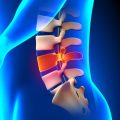Introduction to Hip Fracture Rehabilitation within the NHS
Hip fractures are a significant health concern among the elderly population in the United Kingdom, with thousands of cases reported annually. The prevalence of hip fractures increases with age, particularly affecting individuals over 65, and is often associated with osteoporosis and increased risk of falls. These injuries can have a profound impact on health and wellbeing, frequently resulting in loss of independence, reduced mobility, and an increased likelihood of long-term care needs. Furthermore, hip fractures carry a considerable risk of complications such as infections, venous thromboembolism, and even mortality within the first year after injury.
The National Health Service (NHS) plays a crucial role in addressing this challenge by providing comprehensive, standardised care for elderly patients suffering from hip fractures. Recognising the importance of early intervention and coordinated rehabilitation, the NHS has established clear standards and guidelines to ensure that every patient receives high-quality, evidence-based care throughout their recovery journey. These guidelines aim to promote optimal outcomes by integrating multidisciplinary approaches, timely surgical management, and tailored rehabilitation programmes that support both physical recovery and emotional wellbeing.
By adhering to these standards, the NHS not only improves individual patient outcomes but also seeks to reduce the wider societal and economic impact of hip fractures. This commitment underscores the vital role of the NHS in safeguarding the health and dignity of older adults across the UK.
2. Initial Assessment and Multidisciplinary Team Involvement
The NHS emphasises the critical importance of a prompt and thorough initial assessment for elderly patients presenting with hip fractures. According to established NHS standards, early assessment protocols are designed not only to identify the nature and extent of the injury but also to evaluate comorbidities, cognitive function, nutritional status, pain levels, and the risk of further complications. Timely assessment—ideally within four hours of hospital admission—is crucial for planning effective rehabilitation and optimising patient outcomes.
Early Assessment Protocols
The initial evaluation typically includes:
- Physical examination and confirmation of fracture via imaging
- Baseline blood tests and ECG
- Cognitive screening (e.g., Abbreviated Mental Test Score)
- Nutritional assessment (using tools such as MUST)
- Pain management review
- Assessment for delirium risk
The Value of a Coordinated Multidisciplinary Approach
The NHS guidelines strongly advocate for a coordinated multidisciplinary approach right from admission. Evidence shows that involving a team of specialists improves functional recovery, reduces length of stay, and minimises complications such as pressure sores or venous thromboembolism. The collaborative team ensures that all aspects of the patient’s health and well-being are addressed through shared decision-making and regular communication.
Typical Multidisciplinary Team Composition (NHS Standards)
| Role | Key Responsibilities |
|---|---|
| Orthopaedic Surgeon | Surgical management; postoperative monitoring |
| Geriatrician | Comprehensive geriatric assessment; medical optimisation |
| Physiotherapist | Mobility assessment; rehabilitation planning; exercise prescription |
| Occupational Therapist | Assessment for activities of daily living; home environment recommendations |
| Nurse Specialist | Pain management; wound care; patient education |
| Dietitian/Nutritionist | Nutritional support; dietary interventions for healing and strength |
| Pharmacist | Medication review; polypharmacy management |
NHS Recommendations in Practice
The multidisciplinary team should convene within 24 hours of the patient’s admission, ensuring an integrated care plan is developed that reflects both clinical priorities and the patient’s individual needs. This person-centred approach underpins all NHS standards for hip fracture rehabilitation in the elderly, supporting better short- and long-term outcomes.
![]()
3. Individualised Rehabilitation Planning
According to NHS standards and guidelines for hip fracture rehabilitation in the elderly, individualised rehabilitation planning is a cornerstone of effective care. Personalising the rehabilitation process ensures that each patient’s unique needs, abilities, and goals are taken into account. This patient-centred approach not only supports physical recovery but also enhances overall wellbeing and quality of life.
Patient-Centred Rehabilitation Plans
The NHS emphasises that rehabilitation should begin as early as possible, ideally within 24 hours of surgery, and be tailored to the patient’s baseline function and preferences. A multidisciplinary team—including physiotherapists, occupational therapists, geriatricians, and nurses—works collaboratively with the patient and their family to develop a comprehensive plan. This approach recognises the importance of respecting the individual’s values, cultural background, and personal circumstances.
Tailored Goal Setting
Setting clear, realistic goals is fundamental in guiding rehabilitation efforts. The NHS recommends involving patients in goal-setting discussions to empower them and foster motivation. Goals may include regaining independence in mobility, returning to previous living arrangements, or improving confidence in daily activities. Regular reviews ensure that goals remain relevant and achievable as recovery progresses.
Factors Influencing Choice of Intervention
Several factors influence the selection of specific interventions for elderly patients recovering from hip fractures. These include pre-existing medical conditions, cognitive status, social support networks, home environment, and any barriers to participation in therapy. The multidisciplinary team continually assesses these factors to adjust the care plan accordingly, ensuring that interventions remain safe, effective, and aligned with NHS best practice guidelines.
4. Core Rehabilitation Interventions and Best Practices
Summary of Recommended Physiotherapy, Occupational Therapy, and Nursing Interventions
The National Health Service (NHS) outlines a comprehensive approach to hip fracture rehabilitation in elderly patients, focusing on multidisciplinary interventions to optimise recovery and quality of life. The core components include physiotherapy, occupational therapy, and nursing care, each guided by evidence-based standards tailored to meet the unique needs of older adults.
Physiotherapy Interventions
Physiotherapists play a pivotal role in early mobilisation and functional restoration. According to NHS guidelines, patients should begin mobilisation within 24 hours post-surgery, provided they are medically stable. Regular assessment and progression of exercises—such as strength training, balance retraining, and gait re-education—are key practices for reducing complications and supporting independence.
Occupational Therapy Interventions
Occupational therapists focus on enabling patients to safely perform daily living activities. This includes assessment of personal care tasks (e.g., washing, dressing), home environment reviews, and recommending adaptive equipment or modifications. The goal is to ensure safe discharge planning while minimising the risk of readmission.
Nursing Interventions
Nurses deliver continuous care through pain management, wound monitoring, medication administration, and patient education. Effective pain control is essential for participation in rehabilitation activities. Nurses also lead on falls prevention strategies by implementing risk assessments and promoting safe mobility practices tailored to each patient.
NHS Standards: Mobilisation, Pain Management, and Falls Prevention
| Intervention Area | NHS Standard/Guideline | Best Practice Example |
|---|---|---|
| Mobilisation | Mobilise within 24 hours post-op unless contraindicated | Supervised walking with aids; progressive activity plans |
| Pain Management | Regular pain assessment using standardised tools; multimodal analgesia | Titration of analgesics; nerve blocks when appropriate |
| Falls Prevention | Comprehensive falls risk assessment for all patients; tailored prevention strategies | Hip protectors, environmental modifications, patient/family education |
The integration of these interventions ensures that elderly patients receive holistic care aligned with NHS standards. Regular multidisciplinary meetings and individualised goal-setting remain at the heart of best practice, supporting recovery and enhancing patient outcomes across the continuum of hip fracture rehabilitation.
5. Ensuring Safe Discharge and Community Integration
Safe and effective discharge planning is a crucial element in the NHS standards for hip fracture rehabilitation in elderly patients. According to national guidelines, discharge should be a coordinated process involving multidisciplinary teams, the patient, and their family or carers. This collaborative approach ensures that all aspects of the individual’s needs are assessed and addressed before they leave hospital care.
Guidance on Discharge Planning
The NHS recommends that discharge planning begins early—ideally from the point of admission. Comprehensive assessments by physiotherapists, occupational therapists, and social workers help determine each patient’s readiness for discharge. These professionals work closely with medical staff to ensure that mobility aids, medication management, and home adaptations (such as grab rails or ramps) are organised well in advance.
Transition to Community or Home Care
A smooth transition from hospital to community or home-based care is vital for ongoing recovery. The NHS emphasises clear communication between hospital teams, GPs, district nurses, and community rehabilitation services. Where necessary, referrals to intermediate care facilities or reablement services provide an additional safety net during this critical period. Detailed handover notes and care plans are shared to avoid lapses in support.
Roles of Support Services in Ongoing Rehabilitation
Support services play an essential role in maintaining progress after discharge. Community physiotherapists continue tailored exercise programmes to improve strength and balance. Occupational therapists may revisit patients at home to review their environment and encourage independence in daily activities. Social care teams assist with practical issues such as meal preparation or personal care if needed. Voluntary organisations and local support groups can further enhance social integration and emotional wellbeing.
In line with NHS standards, follow-up appointments are arranged to monitor recovery, address any complications promptly, and adjust rehabilitation plans as needed. By prioritising safe discharge and effective community integration, these measures collectively promote a successful return to independent living for elderly hip fracture patients.
6. Audit, Quality Assurance, and Ongoing Improvements
The NHS places a strong emphasis on the continual improvement of hip fracture rehabilitation services for elderly patients through robust audit mechanisms and quality assurance frameworks. Monitoring systems such as the National Hip Fracture Database (NHFD) play a pivotal role in tracking patient outcomes, adherence to best practice tariffs, and benchmarking performance across trusts. Regular audits are mandated within NHS standards, ensuring that all multidisciplinary teams consistently deliver care aligned with national guidelines and identify areas for enhancement.
Overview of NHS Monitoring Systems
The NHFD is central to the NHSs commitment to transparency and accountability in hip fracture rehabilitation. It collects comprehensive data on patient demographics, surgical interventions, timings, rehabilitation milestones, and long-term outcomes. This information is analysed at local and national levels to monitor trends, support clinical governance, and inform service development.
Audit Requirements in Rehabilitation Programmes
Routine audits are integrated into the operational fabric of hip fracture care pathways. These audits assess compliance with established clinical standards, such as timely surgery (within 36 hours), prompt mobilisation post-operatively, access to geriatrician-led care, and effective discharge planning. Audit findings are reviewed in multidisciplinary meetings, fostering a culture of shared learning and continuous professional development.
Continuous Quality Improvement Processes
NHS trusts are encouraged to adopt quality improvement methodologies—such as Plan-Do-Study-Act (PDSA) cycles—to test innovations and address gaps highlighted by audit data. Patient feedback is also solicited to refine rehabilitation pathways, ensuring that services remain patient-centred and responsive to individual needs. Through these structured processes, the NHS ensures that hip fracture rehabilitation programmes for older adults consistently evolve to meet the highest standards of safety, effectiveness, and compassion.


